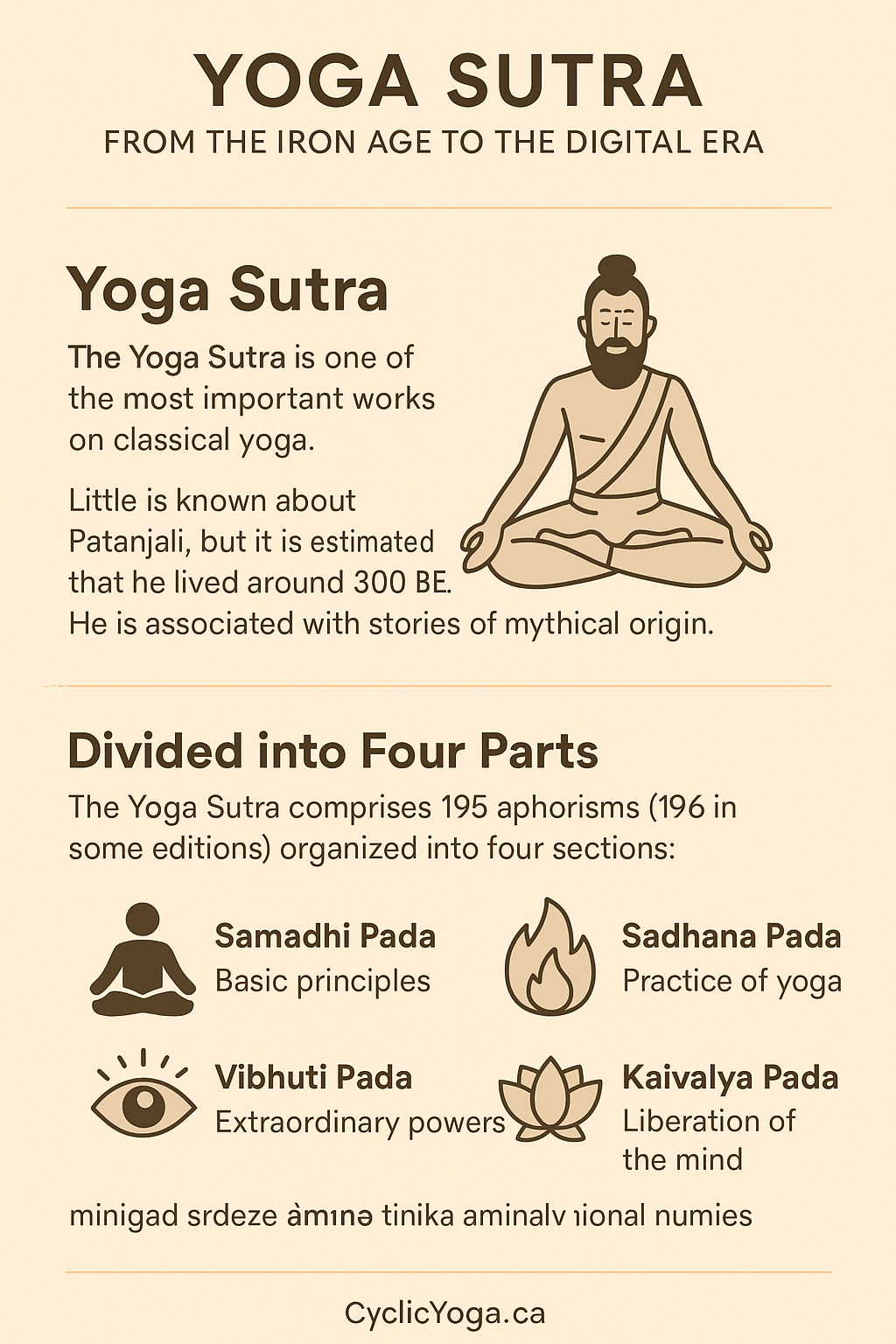History of Yoga: The Yoga Sutras and the Legacy of Patañjali
The Yoga Sutras is one of the most important and ancient texts associated with Classical Yoga. The authorship of this revered work is traditionally attributed to the sage Patañjali.
While there is limited concrete historical information about Patañjali, ancient Indian texts and traditions suggest that he lived around 300 BCE. Fascinating myths surround his birth and life—one of which involves a wise and virtuous woman named Gonika.
According to the legend, Gonika, a devoted seeker of divine knowledge, was bathing in a river when she prayed for someone worthy to receive her vast spiritual wisdom. In response, the Divine sent her a gift—Patañjali, who descended into her hands as a blessing. Raised by Gonika with care and reverence, Patañjali received and absorbed her profound knowledge.
In Hindu mythology, it is believed that the Divine, out of compassion for humanity, allowed the sacred science of Yoga to be revealed on Earth through Patañjali.
Patañjali’s Three Great Contributions
Patañjali is regarded as the author of three major works:
A treatise on Sanskrit grammar
A foundational text on Ayurvedic medicine
The Yoga Sutras, considered his most influential contribution to the spiritual world
Structure of the Yoga Sutras
The Yoga Sutras consists of 195 aphorisms (some versions mention 196), offering a systematic, concise, and insightful presentation of yogic philosophy and practice. These aphorisms form the backbone of Rāja Yoga, the path of mental discipline, willpower, and inner mastery.
In the spiritual traditions of India, Patañjali is revered for his genius and clarity. In classical artwork (see Figure 1), he is often depicted with a half-human, half-serpent form—a symbol of vast, hidden wisdom and spiritual power. The serpent in ancient Indian symbology represents kundalini, latent knowledge, and transformation.
Chronological Context
It is widely accepted that Patañjali lived after the Upanishads and the Bhagavad Gītā, two other foundational texts of Indian spiritual thought. While the Gītā extensively discusses yoga theory, it does not mention Patañjali or the Yoga Sutras by name.
Patañjali’s approach focuses on Rāja Yoga—the royal path of controlling the mind and senses to reach spiritual liberation. His sutras provide not only a psychological framework, but also a methodical guide for mastering the mind and transforming consciousness.
The Four Chapters of the Yoga Sutras
Samādhi Pāda (51 sutras) – Covers the basic principles of yoga, focusing on the cultivation of awareness and the meditative mind.
Sādhana Pāda (55 sutras) – Outlines the practical tools and methods for spiritual discipline. The famous Eight Limbs of Yoga (Ashtanga Yoga) are introduced here.
Vibhūti Pāda (55 or 56 sutras) – Discusses extraordinary powers (siddhis) that can arise from advanced yogic practices.
Kaivalya Pāda (34 sutras) – Explores enlightenment, spiritual freedom, and liberation (kaivalya), offering profound philosophical insights into the soul’s journey toward union with the Divine.
Historical Perspectives and Variations
Some scholars, such as Surendranath Dasgupta, believe that the first three chapters were compiled around the 2nd century BCE, while the fourth chapter may have originated earlier.
European scholars have noted that the Yoga Sutras appear to have been edited or modified over time. Dasgupta highlights the Arabic translation of the text by Abū Rayḥān al-Bīrūnī, titled “Patanjal al-Hindi fi al-Khalas wa al-Mamthal”. He observed significant differences between this Arabic version and the Sanskrit text currently in circulation.
Legacy
Despite textual variations and interpretive differences, the Yoga Sutras remain a foundational text in yoga philosophy. Patañjali’s work continues to inspire practitioners across the world to explore the power of the mind, the discipline of the spirit, and the timeless path to union with the Self.

